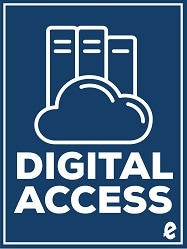
Statistics in Psychology Using R and SPSS
by Rasch, Dieter; Kubinger, Klaus; Yanagida, TakuyaRent Textbook
New Textbook
We're Sorry
Sold Out
Used Textbook
We're Sorry
Sold Out
eTextbook
We're Sorry
Not Available
Summary
Table of Contents
1 Concept of the Book.
2 Measuring in Psychology.
2.1 Types of psychological measurements.
2.2 Measurement techniques in psychological assessment.
2.3 Quality criteria in psychometrics.
2.4 Additional psychological measurement techniques.
2.5 Statistical models of measurement with psychological roots.
3 Psychology: An Empirical Science.
3.1 Gain of insight in psychology.
3.2 Steps of empirical research.
4 Definition: Character, Chance, Experiment, and Survey.
4.1 Nominal scale.
4.2 Ordinal scale.
4.3 Interval scale.
4.4 Ratio scale.
4.5 Characters and factors.
II Descriptive Statistics.
5 Numerical and graphical Data Analysis.
5.1 Introduction to data analysis.
5.2 Frequencies and empirical distributions.
5.3 Statistics.
5.4 Frequency distribution for several characters.
III Inferential Statistics for one Character.
6 Probability and distribution.
6.1 Relative frequencies and probabilities.
6.2 Random variable and theoretical distributions.
6.3 Quantiles of theoretical distribution functions.
6.4 Mean and variance of theoretical distributions.
6.5 Estimation of unknown parameters.
7 Assumptions: Random Sampling and Randomization.
7.1 Simple random sampling in surveys.
7.2 Principles of random sampling and randomization.
8 One Sample from one Population.
8.1 Introduction.
8.2 The Parameter mof acharacter modeled by a normally distributed random variable.
8.3 Planning a study for hypothesis testing with respect to m.
8.4 Sequential tests for the unknown parameter m.
8.5 Estimation, hypothesis testing, planning the study, and sequential testing concerning other parameters.
9 Two Samples from two Populations.
9.1 Hypothesis testing, study planning and sequential testing regarding the unknown parameters m1 and m2.
9.2 Hypothesis testing, study planning and sequential testing for other parameters.
9.3 Equivalence testing.
10 Samples from more than two Populations.
10.1 The various problem situations.
10.2. Selection procedures.
10.3 Multiple comparisons of means.
10.4 Analysis of variance.
IV Descriptive and Inferential Statistics for two Characters.
11 Regression and Correlation.
11.1 Introduction.
11.2 Regression model.
11.3 Correlation coefficients and measures of association.
11.4 Hypothesis testing and planning the study concerning correlation coefficients.
11.5 Correlation analysis in two samples.
V Inferential Statistics for more than two Characters.
12 One Sample from one Population.
12.1 Association between three or more characters.
12.2 Hypothesis testing concerning a vector of means m.
12.3 Comparisons of means and "homological" methods for matched observations.
13 Samples from more than one Population.
13.1 General linear model.
13.2 Analysis of covariance.
13.3. Multivariate analysis of variance.
13.4 Discriminant analysis.
VI Model Generation and Theory-Generating Procedures.
14 Model Generation.
14.1 Theoretical basics of model generation.
14.2 Methods for determining the quality and excellence of a model.
14.2.1 Goodness of fit tests.
14.2.2 Coefficients of the goodness of fit.
14.2.3 Cross-validation.
14.4 Simulation: Non-analytical solutions to statistical problems.
15 Theory-Generating Procedures.
15.1 Descriptive statistics' methods.
15.2 Methods of inferential statistics.
An electronic version of this book is available through VitalSource.
This book is viewable on PC, Mac, iPhone, iPad, iPod Touch, and most smartphones.
By purchasing, you will be able to view this book online, as well as download it, for the chosen number of days.
Digital License
You are licensing a digital product for a set duration. Durations are set forth in the product description, with "Lifetime" typically meaning five (5) years of online access and permanent download to a supported device. All licenses are non-transferable.
More details can be found here.
A downloadable version of this book is available through the eCampus Reader or compatible Adobe readers.
Applications are available on iOS, Android, PC, Mac, and Windows Mobile platforms.
Please view the compatibility matrix prior to purchase.
